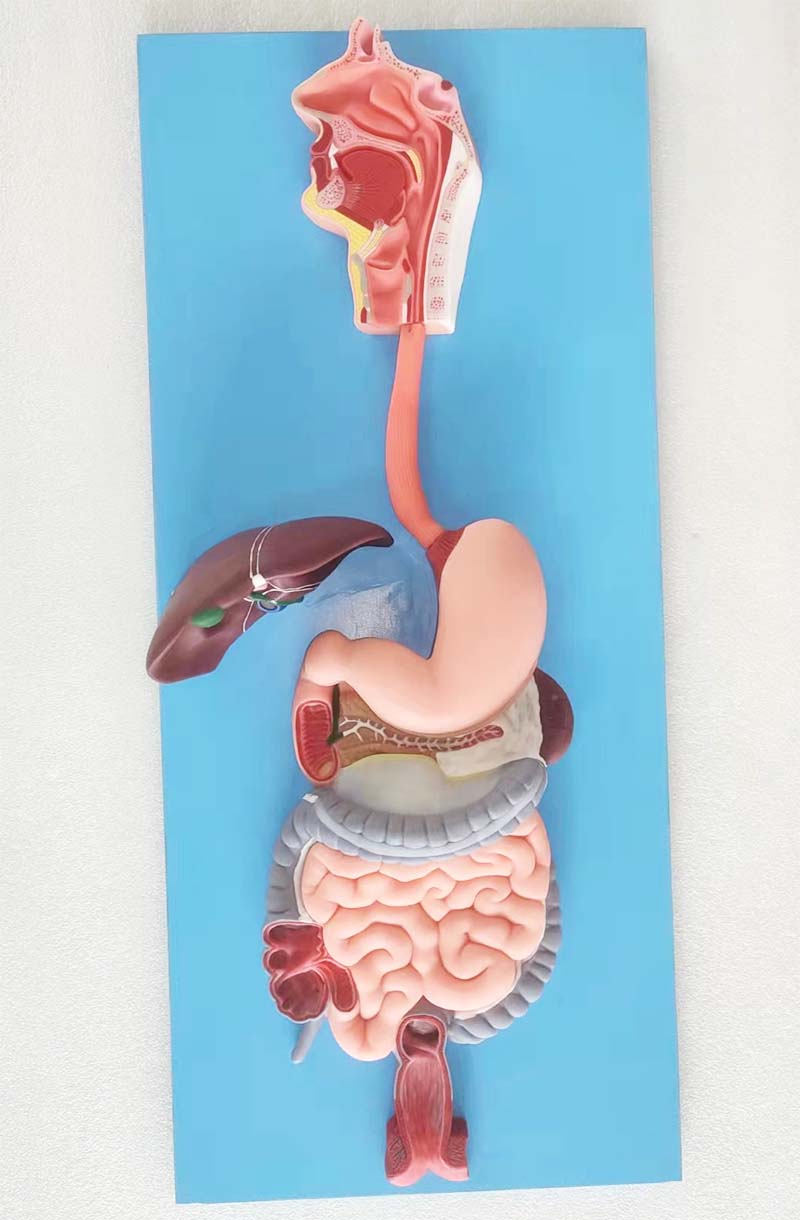Step 1: The Mouth—A Screening Ground for Good and Evil
The mouth is the first battlefield in this "food transformation war." When food enters the mouth, the teeth act like a grinder, cutting and grinding the food, increasing its contact surface with digestive juices. Simultaneously, salivary amylase in the saliva secreted by the salivary glands rapidly attacks starch, breaking it down into maltose. The tongue, like a diligent blender, constantly stirs the food, thoroughly mixing it with saliva and forming a bolus that is easy to swallow. (Digestive system anatomical model warning! Heavy metal particles and pathogenic bacteria carried with food lurk here. If not neutralized by the antibacterial components of saliva, they can sow the seeds of trouble.) This process not only initiates chemical digestion but also allows us to taste the flavors of food. If oral hygiene is not adequate, bacteria decompose residual food, producing acidic substances that corrode teeth and cause caries. Long-term bad habits like smoking and drinking can also damage the oral mucosa, laying the groundwork for cancer.
Stomach: A Double-Edged Sword of High Acidity
After initial processing in the mouth, the food bolus enters the stomach through the esophagus, a "highway." Gastric glands in the stomach wall secrete gastric acid and pepsinogen. The acidic environment created by gastric acid activates pepsinogen, converting it into pepsin, which breaks down proteins. The combined action of gastric acid and pepsin provides a preliminary breakdown of proteins while also killing some bacteria introduced with food. The stomach continuously contracts and relaxes, thoroughly mixing the food bolus with gastric fluid to form a semi-fluid chyme. However, if we frequently overeat and eat irregularly, our stomachs become overly distended and acid secretion becomes disrupted, eroding the gastric mucosa and causing gastritis and ulcers. In this case, the gastric acid, originally used to digest food, becomes the primary culprit, hindering proper digestion and energy conversion.
Small Intestine: A 300-square-meter Life-or-Death Decision
Chyme leaving the stomach enters the small intestine, a nutrient absorption superfactory. The lining of the small intestine is covered with circular folds, villi, and microvilli, expanding the absorption area to hundreds of square meters. Pancreatic juice secreted by the pancreas contains various digestive enzymes, such as amylase, trypsin, and lipase, which thoroughly digest carbohydrates, proteins, and fats, respectively. Bile secreted by the liver, while not containing digestive enzymes, emulsifies fat, aiding its digestion and absorption. Within the small intestine, nutrients such as glucose, amino acids, and fatty acids are fully absorbed into the blood and lymphatic circulation, providing energy and building blocks for various tissues and organs. Once the small intestine develops disease, such as parasitic infestation or enteritis, nutrient absorption is impaired. The body becomes weak and emaciated due to a lack of energy. Nutrients in food cannot be utilized, and incomplete digestion may produce harmful substances.
The Large Intestine: The Last Bastion of Purification
Food residues enter the large intestine, reaching the final stop on their journey. Here, water is absorbed further, and the residue gradually concentrates to form feces. Numerous bacteria in the large intestine ferment undigested food residues, producing beneficial substances such as vitamin K and B vitamins that are absorbed and utilized by the body. However, if constipation persists for too long in the large intestine, harmful substances produced by bacterial decomposition can be reabsorbed into the bloodstream, causing problems such as dull skin and bad breath. In severe cases, this can also impair the liver's detoxification function, threatening health.
The digestive system anatomical model visually illustrates the structure and function of the various organs of the digestive system. Each link is closely connected and works together to complete the tasks of digestion, absorption, and excretion. From food intake to nutrient absorption to waste excretion, the proper functioning of the digestive system is a solid foundation for human health. "Diseases come from the mouth." As the primary pathway for food to enter the body, the digestive system's health directly impacts overall overall health. We should prioritize digestive health, maintain healthy eating habits, and pay attention to the health signals it sends, ensuring this crucial line of defense for human health remains strong.



